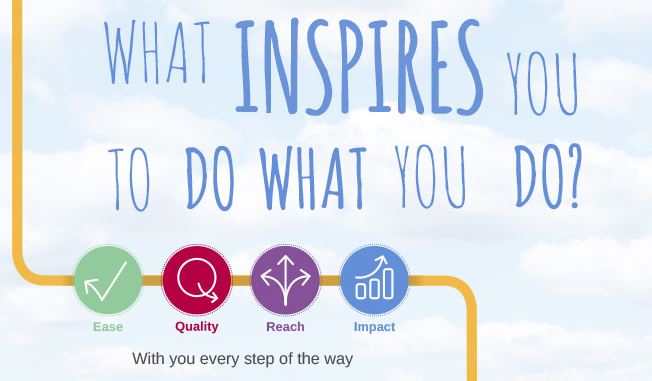every-good-paper-deserves-a-home-at-wiley
January 10, 2019
An Editor’s Role.
Working with an author to ensure their paper is the best it can be is part of an editor’s job; some might argue it is the most critical way in which an editor adds value to the scholarly literature. Together with the reviewers, editors invest huge amounts of time in the evaluation of manuscripts. They do so to ensure the collective quality of the literature and provide a solid foundation upon which future research can be built. Rejecting a paper for publication can seem counterproductive to this mission, but it is important to remember that while many papers scrutinized in peer review are published in an editor’s own journal, increasingly, a paper may go through multiple revisions and journals before finding a home within the literature.
Reasons for rejecting a paper vary from journal to journal—criteria common to all reputable scholarly journals are related to research rigor: the need for a well-thought out hypothesis, sound methodology, and sensible conclusions supported by the data and arguments presented. Beyond these factors, other considerations such as the research topic covered, or the perceived novelty of the described work can influence an editor’s decision. On occasion, though less common in a digital age, “space” can also be a factor.These varying acceptance criteria give rise to a “hierarchy” of journals within a subject area, imperfectly described through metrics such as the CiteScore or the Journal Impact Factor.
Quality First.
As mentioned above, all reputable journals, such as those published by Wiley, seek to publish quality work. Quality is not a measure of perceived impact or significance, but rather it is defined by the validity of the hypothesis, the design of the experiment and methodology used, the value of the dataset/output (size, completeness, etc.), and the conclusion drawn from the results obtained.
In recent years, the quality of the research literature has come under scrutiny, with growing concerns over the reproducibility and accuracy of reports. As a result, community-led initiatives to improve the quality of research conducted and the way it is reported have emerged. Initiatives such as the PRISMA guidelines, Research Resource Identifiers, and many more, are aimed at improving the quality of the literature. Increasingly, journals and their publishers are implementing practices and policies that support such community initiatives and drive towards a higher standard of quality in the literature.
This movement has in turn led to a more inclusive approach to publishing—a paradigm shift that embraces all forms of research reports, not just the hyper-impactful or highly significant. A recognition that all well-conducted research furthers the field and deserves to be captured in the literature. In today’s climate, articles reporting negative or incremental results, or those reporting the findings of a validation or replication study, can find a home among the thousands of journals published worldwide. So-called “sound science” journals such as PLoS One, where the focus is on the quality of the research rather than the perceived novelty, have emerged, offering a home to papers otherwise excluded from traditional journals that confine their scope to highly significant work.
As with all things in life, diversity is a welcome driver of productivity and innovation, and Wiley is no exception among publishers in cultivating a portfolio of journals that include ultra-selective field-leading titles, highly specialized niche journals, broad-scoped titles that exclude novelty from acceptance criteria, and everything in between.
An Author’s Struggle.
The vast majority of authors try to pitch a given article at the right level. Depending on the breadth of appeal of their work, they will likely approach a suitably broad-scoped or specialized journal. Conversely, a journal with strict requirements for novelty or one that takes a broader interpretation of significance will be approached depending on the advancement in the field made by the author’s findings.
Not uncommonly, a manuscript is rejected by the author’s first-choice title because it does not fit the scope—it may have been found to be too narrow in focus or not sufficiently important for the journal. Rejection by one journal certainly does not mean the article is not suitable for publication anywhere. Indeed, authors typically go on to submit their rejected manuscript, potentially in a revised form, to their second- or third-choice journal, where the cycle of evaluation begins again.
This process of revision and resubmission offers authors an opportunity to refine their article and to find a more appropriate publication venue. It also serves to improve the value of the literature; indeed, the role of peer review in the quality of the literature is widely considered to be critical. However, this process is also time-consuming for authors and wasteful of the efforts of the editors and reviewers who have invested time in evaluating the paper. Eliminating efficiencies in the system will serve to improve the publication process, which underpins discovery and innovation within research.
A Long-standing Practice.
Editors consider a key part of their role to be helping authors get published, either in their own title or elsewhere. In addition to making suggestions for the improvement of the paper, through edits and additional experiments, it is not uncommon for an editor to suggest an alternate journal when rejecting a paper. Reviewers often express an opinion on the best publishing outlet for an article under evaluation. This has been common practice for years.
While valuable to the author in selecting the next journal, such suggestions in the rejection letter have limited impact on the overall efficiency of the system in the absence of a technology solution that formalizes and facilitates that suggestion.
If the authors choose to transfer their manuscript, the results of any evaluation are also securely shared with the editor of the new journal, allowing them to consider the comments of the previous editor and reviewers when considering the transferred manuscript. Whether requesting a revision, seeking further external evaluation, or making an immediate decision, the editor is better informed and thus more able to take quick and decisive action.
Such collaborations between journals are now so commonplace in certain fields, especially within STEM, that authors expect to receive a referral offer if rejected. The referral decision is a true service to authors, offering them a route to rapid evaluation and publication in another reputable journal.
















